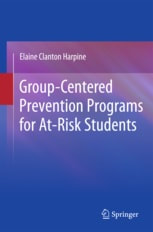Vowel clustering teaches both phonemic and phonological awareness by teaching children to decode and encode letter sounds in order to read words (Clanton Harpine, 2010). All of my reading programs teach phonemic awareness (learning letter sounds) and phonological awareness (learning to work with letter sounds). Phonemic awareness teaches children to recognize that letters of the alphabet represent sounds. Phonological awareness teaches children to work with letter sounds to build multisyllable and compound words. Vowel clustering teaches students to decode or break words down into letter sounds and then to encode or reassemble those sounds back into pronounceable words. Vowel clustering has been tested and proven to work with all students, including struggling, at-risk, and failing students.
So far in our series on vowel clustering, we have established that
· Letters represent sounds.
· We read primarily using lower case alphabet letters.
· Vowels are a key factor in how a word is pronounced.
The next question is how do we teach students vowel sounds? Vowel clustering teaches all of the vowel sounds in clusters. The traditional phonics approach was to learn the short vowel sounds for a, e, i, o, u, and then to learn the long vowel sounds for the same vowels. The critical difference here is that when using phonics, beginning students are only taught long vowel sounds with silent e, such as: cake, tree, ice, tone, use. Yet, looking just at the long vowel sound for the letter a, we see an immediate problem with the phonics method. There are seven different letter combinations that can be used to make the long a vowel sound: ea, ai, ay, ei, ey, eigh, and silent e. Of course, the letter a can also make the long a vowel sound when it stands alone, as with the word apron. So, if you are only introducing students to the long a sound through silent e, you have created a problem and confused struggling students, especially when you come along later and introduce irregular vowel sounds. Irregular vowel sounds that are thrown in later is how most students get lost while learning vowels.
Instead, it is much better to teach students all of the sounds for the letter a in a cluster before going on to the next vowel. Remember, we are training the brain, building pathways in the brain; therefore, it is important to organize the way we teach so that the students can organize how they learn. We want to work with the brain, not against it. If we teach in a haphazard fashion, struggling students become confused. Vowel clustering presents a visual picture through use of a vowel clustered word wall, an auditory learning technique through oral reading and spelling of new words as they are matched to their letter sound on the vowel clustered word wall. This enables students to see and hear the letter sounds. Vowel clustering also teaches handwriting because it is very important that students write the words correctly as they practice reading, spelling, and matching letter sounds on a vowel clustered word wall.
Vowel clustering is an easy method to teach. If you have questions, contact me by clicking the e-mail envelope on the top right-hand corner of this page.

 RSS Feed
RSS Feed
